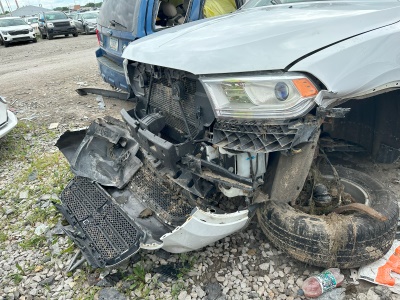How Do Vehicle Ratings Work?
by Courtney Conley Buying a new car is a big decision. There are so many things to consider: price, features, and aesthetic among them. The most important thing to consider is safety. The safety rating system in the US helps consumers understand how well a car will protect them in the event of a collision. But, you may be wondering, how does that system work? Let’s take a look!

Who Rates Car Safety?
Here in the US, there are two main organizations that are in charge of awarding safety ratings to vehicles:
- National Highway Traffic Safety Administration (NHTSA): NHTSA runs frontal, side barrier, side pole, and rollover crash tests and reports they are the only organization that rates rollover resistance in addition to other crashworthiness tests.
- Insurance Institute for Highway Safety (IIHS): IIHS runs moderate overlap frontal, small overlap frontal, side impact, and roof strength crash tests and evaluates how well the vehicle protects occupants in a collision, and how effective the vehicle crash avoidance and mitigation technology works.
You can usually find safety ratings on the car manufacturer’s website as well.
How Does the Vehicle Rating System Work?
These organizations use different rating systems:
- NHTSA uses a 5-star rating system. One star is the lowest rating, and 5 stars is the highest rating.
- IIHS uses a four-tier rating system of Good, Acceptable, Marginal, or Poor.
Limitations of Vehicle Safety Rating Systems
One criticism of the current vehicle safety rating systems in the US is the lack of diversity in crash test dummies. NHTSA uses either an "average-size adult male" dummy or a "small size adult female" dummy in their tests. The Government Accountability Office (GAO) suggests that without a diverse range of dummies (e.g., body size, age, etc.), the safety rating isn’t necessarily accurate for everyone. The GAO recommended NHTSA address the limitations provided by the dummies, and NHTSA agreed and has stated that they are planning to address this in the future.
How to Check a Vehicle’s Safety Rating
It’s a good idea to check the safety rating from both organizations. NHTSA is a great place to start. Look for vehicles with 4-or-5-star ratings. Once you’ve found a vehicle you like with a high NHTSA safety rating, check the IIHS website to see how it ranks there. Look for vehicles with Good ratings in all categories.
When it’s time to buy your next car, keep safety at the top of your mind. The coolest-looking car out there isn’t always the safest one.
Interested in learning more about traffic safety?
Are you looking for defensive driving and traffic school courses? Do you want a discount on your auto insurance? Do you know a teen who’s ready to take an online driver education course?
Safe2Drive is here to help! We offer convenient online courses for drivers of any age! Visit our website today to learn about the online courses we offer in your state.
Buying a new car is a big decision. There are so many things to consider: price, features, and aesthetic among them. The most important thing to consider is safety. The safety rating system in the US helps consumers understand how well a car will protect them in the event of a collision. But, you may be wondering, how does that system work? Let’s take a look!